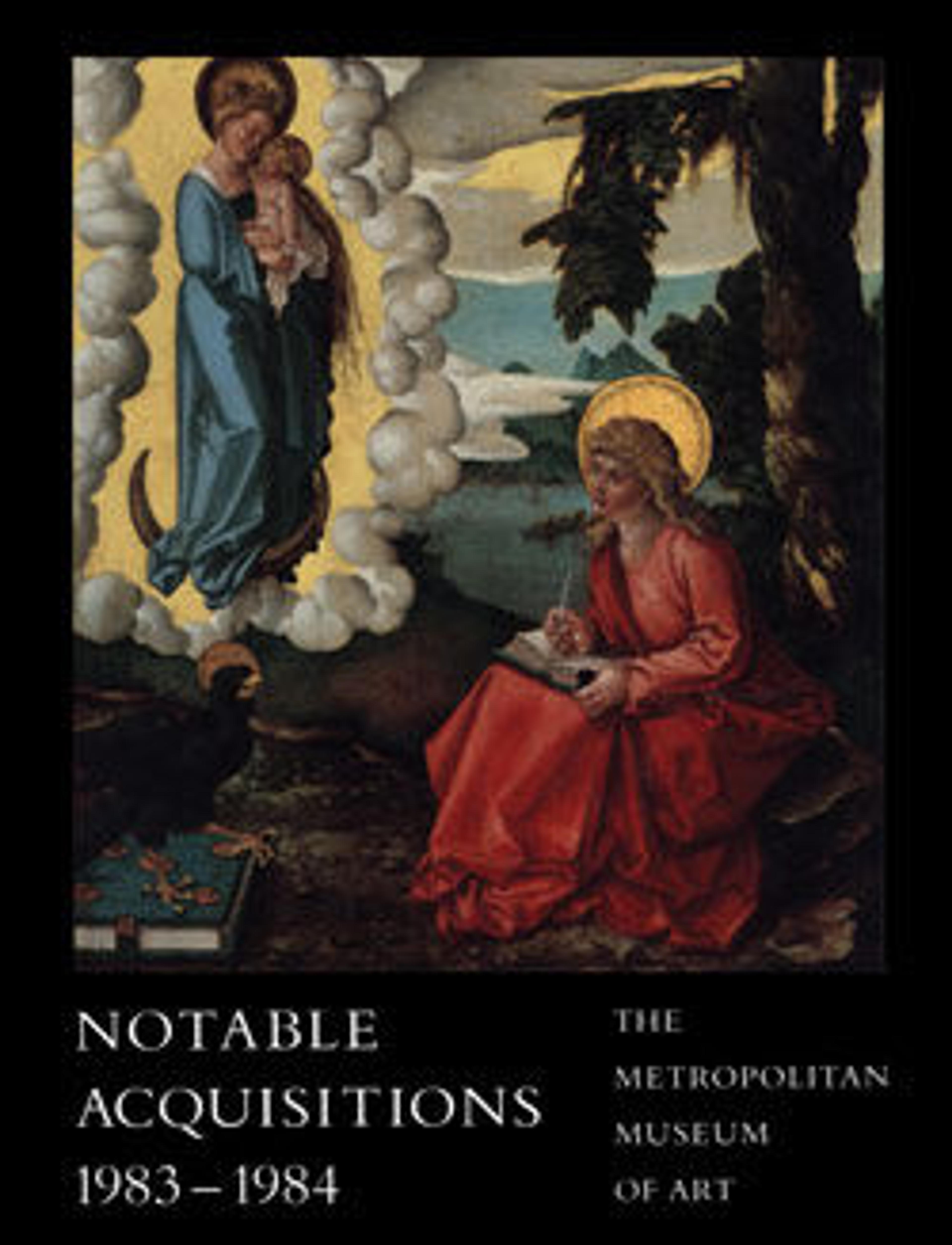Incense burner (brûle-parfum)
The word cassolette was current in the eighteenth century for a phrase, coined in the latter half of the nineteenth century, that is more frequently used today: brûle-parfum. Both expressions apply to a piece of furniture or smaller object fitted with a receptacle, a utilitarian yet often beautiful item that produced pleasing fragrances (and in fact served as a kind of room deodorizer). Brûle-parfum is the more descriptive of the two terms, for the aromas were generated by miniature stoves or spirit lamps, called réchauds, set into the receptacles over which pastilles or sweet-smelling essences (eaux de senteur) were heated. Workers belonging to the Paris guild of parfumeurs produced the ingredients that released these delicious odors.
The operation of the Museum's incense burner depended upon a small réchaud, now missing, that fitted into the bottom of the inverted-pear-shaped basin, which can be lifted out of the stand by means of three gilt-bronze, wreath-shaped handles, possibly to facilitate the emptying of ashes. Made of heavy copper plated on the inside with tin, this receptacle would have withstood the heat emitted from a spirit lamp. Fumes from the fuel, as well as aromatic exhalations, escaped through the ornamental perforations of the lid, which is mounted, like the basin, with a beautiful gilt-bronze leaf cup and knob.
The finely carved rams' heads and feet on the three supports, the pinecone motif, the scale-pattern moldings, and the square-fretted scrolls are drawn from a standard repertory of Neoclassical ornament and are consistent with a dating of about 1775.
A form of tripod stand used for ritualistic purposes was developed in antiquity, and versions of it reappear in Italian Renaissance paintings and sculpture. Small domestic articles of furniture based upon the classical tripod stand seem to have originated just after the middle of the eighteenth century in England and France, where they were called athéniennes if used for multiple purposes.
The operation of the Museum's incense burner depended upon a small réchaud, now missing, that fitted into the bottom of the inverted-pear-shaped basin, which can be lifted out of the stand by means of three gilt-bronze, wreath-shaped handles, possibly to facilitate the emptying of ashes. Made of heavy copper plated on the inside with tin, this receptacle would have withstood the heat emitted from a spirit lamp. Fumes from the fuel, as well as aromatic exhalations, escaped through the ornamental perforations of the lid, which is mounted, like the basin, with a beautiful gilt-bronze leaf cup and knob.
The finely carved rams' heads and feet on the three supports, the pinecone motif, the scale-pattern moldings, and the square-fretted scrolls are drawn from a standard repertory of Neoclassical ornament and are consistent with a dating of about 1775.
A form of tripod stand used for ritualistic purposes was developed in antiquity, and versions of it reappear in Italian Renaissance paintings and sculpture. Small domestic articles of furniture based upon the classical tripod stand seem to have originated just after the middle of the eighteenth century in England and France, where they were called athéniennes if used for multiple purposes.
Artwork Details
- Title: Incense burner (brûle-parfum)
- Date: ca. 1775
- Culture: French
- Medium: Gilded and marbelized oak and beech, gilt-bronze, copper, tin and tin-plating
- Dimensions: 40 × 18 1/2 × 18 1/2 in. (101.6 × 47 × 47 cm)
- Classification: Woodwork-Furniture
- Credit Line: Purchase, Gift of Mr. and Mrs. Charles Wrightsman, by exchange, 1983
- Object Number: 1983.313a–c
- Curatorial Department: European Sculpture and Decorative Arts
More Artwork
Research Resources
The Met provides unparalleled resources for research and welcomes an international community of students and scholars. The Met's Open Access API is where creators and researchers can connect to the The Met collection. Open Access data and public domain images are available for unrestricted commercial and noncommercial use without permission or fee.
To request images under copyright and other restrictions, please use this Image Request form.
Feedback
We continue to research and examine historical and cultural context for objects in The Met collection. If you have comments or questions about this object record, please contact us using the form below. The Museum looks forward to receiving your comments.
